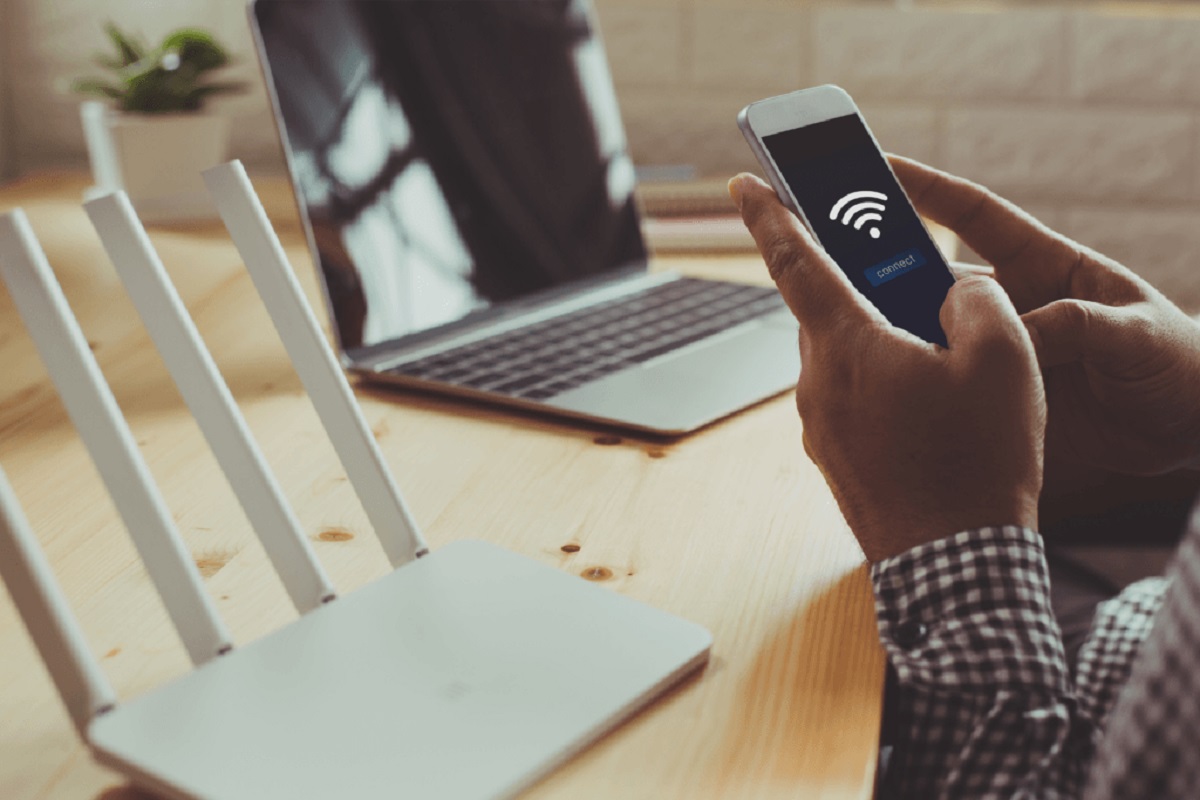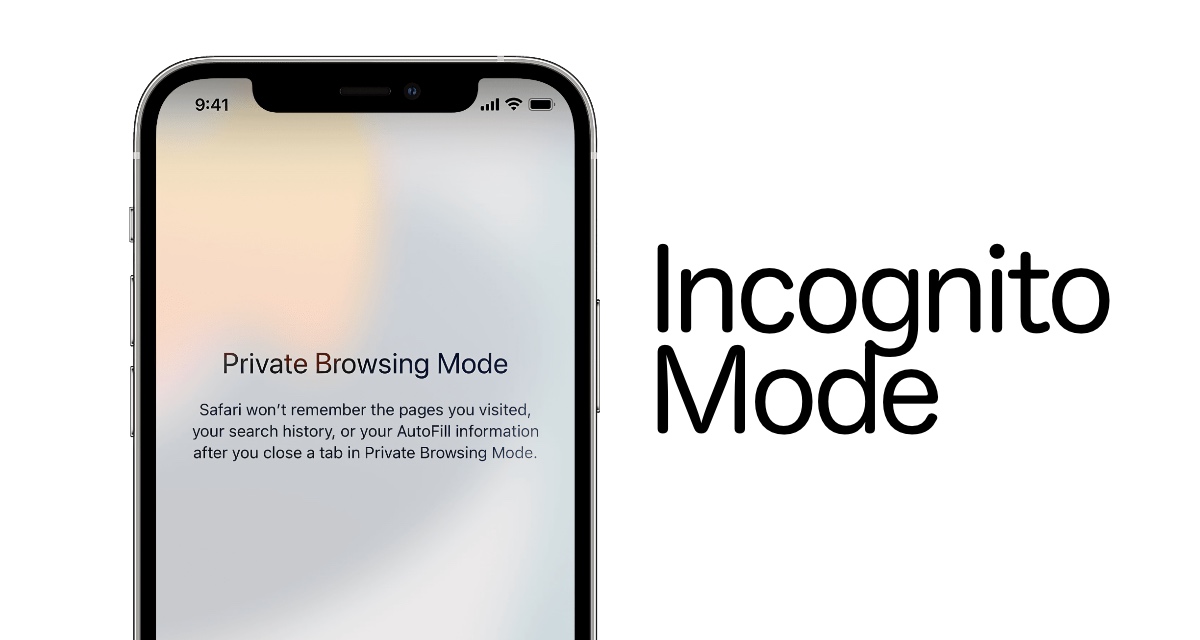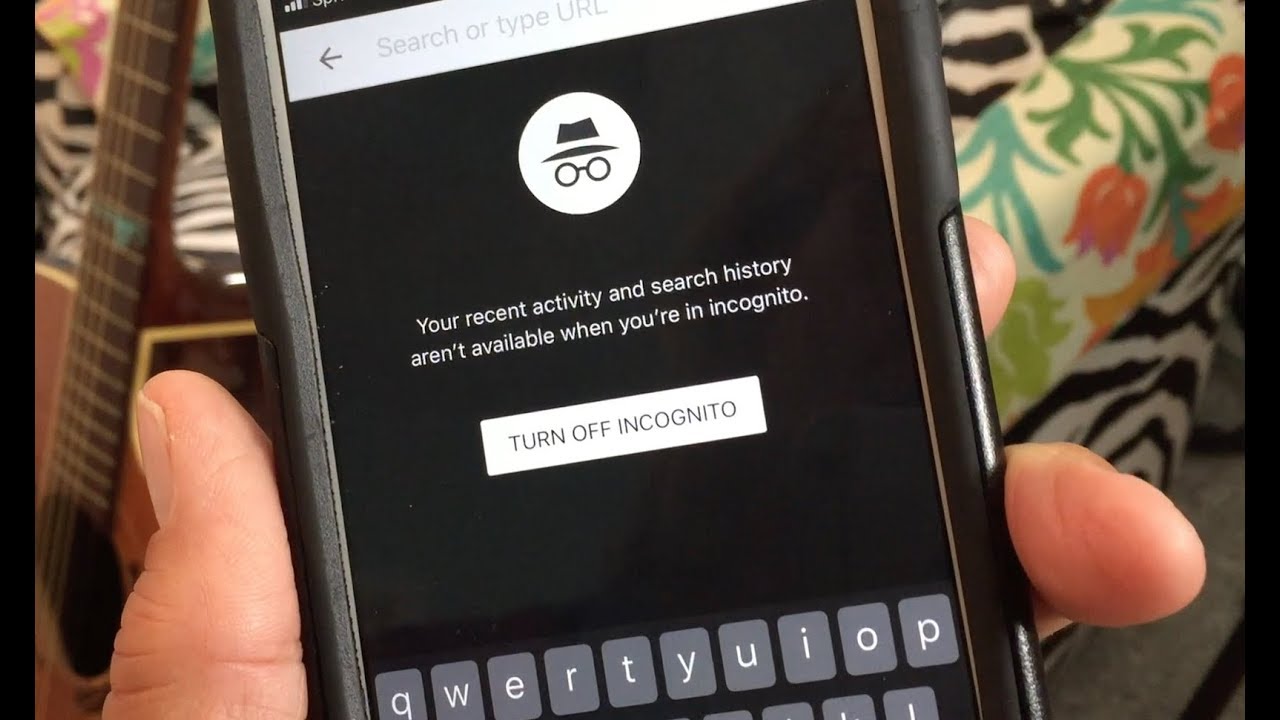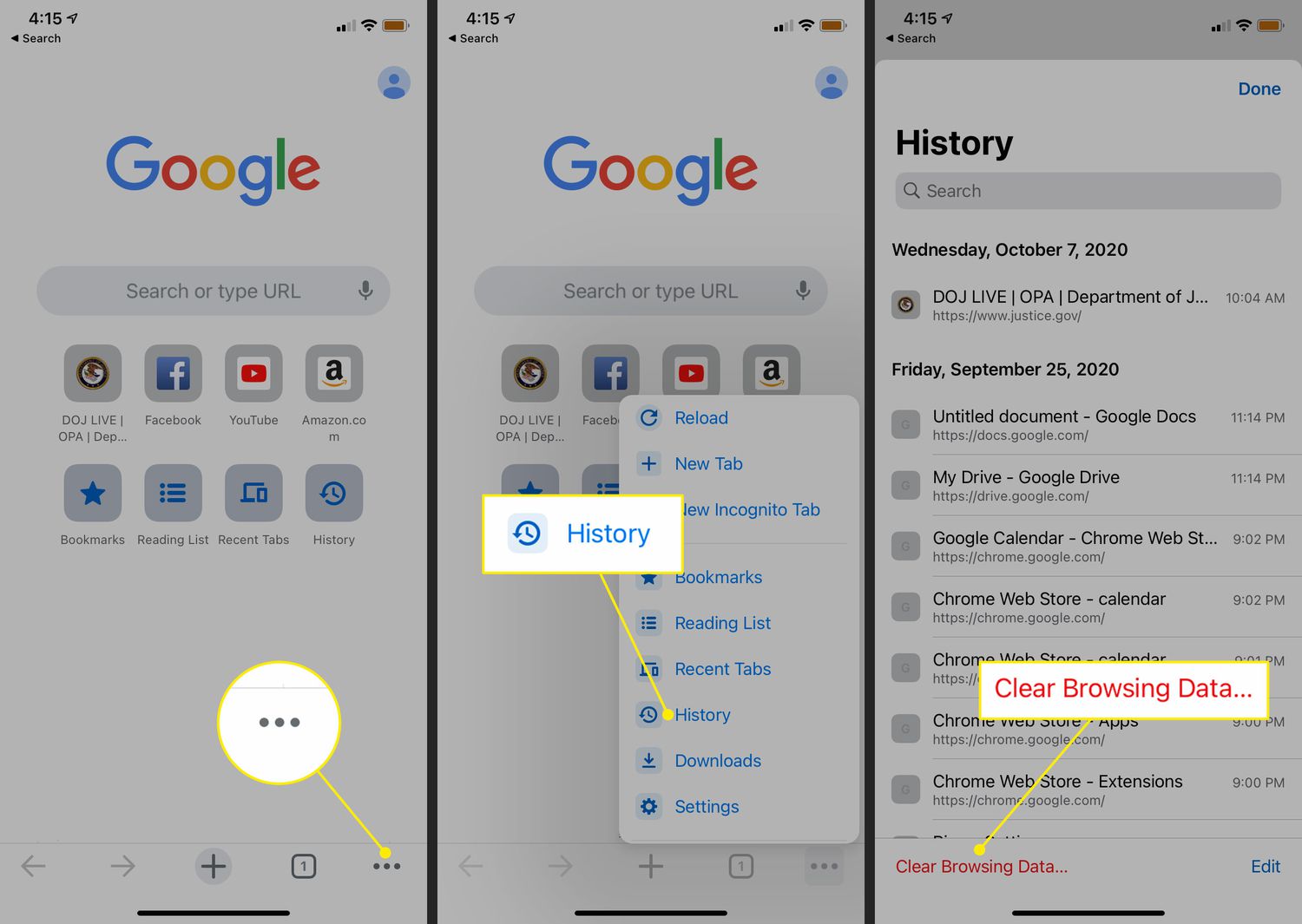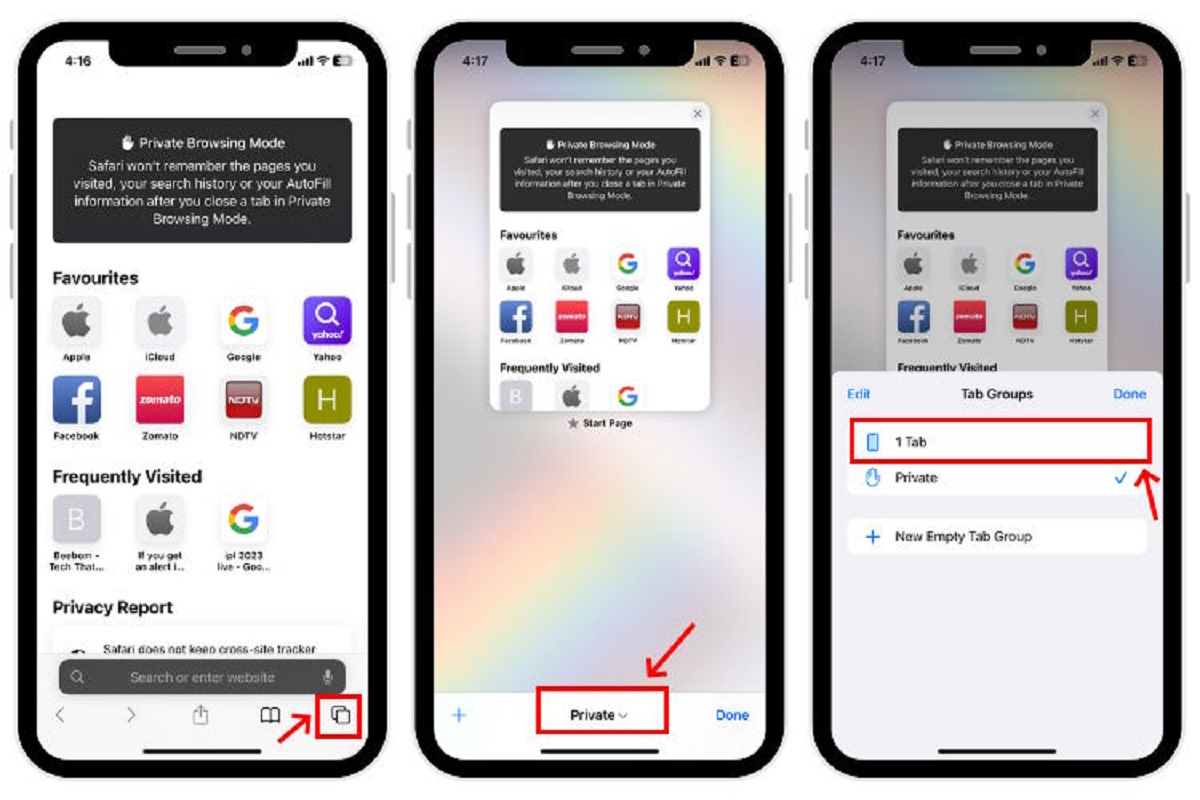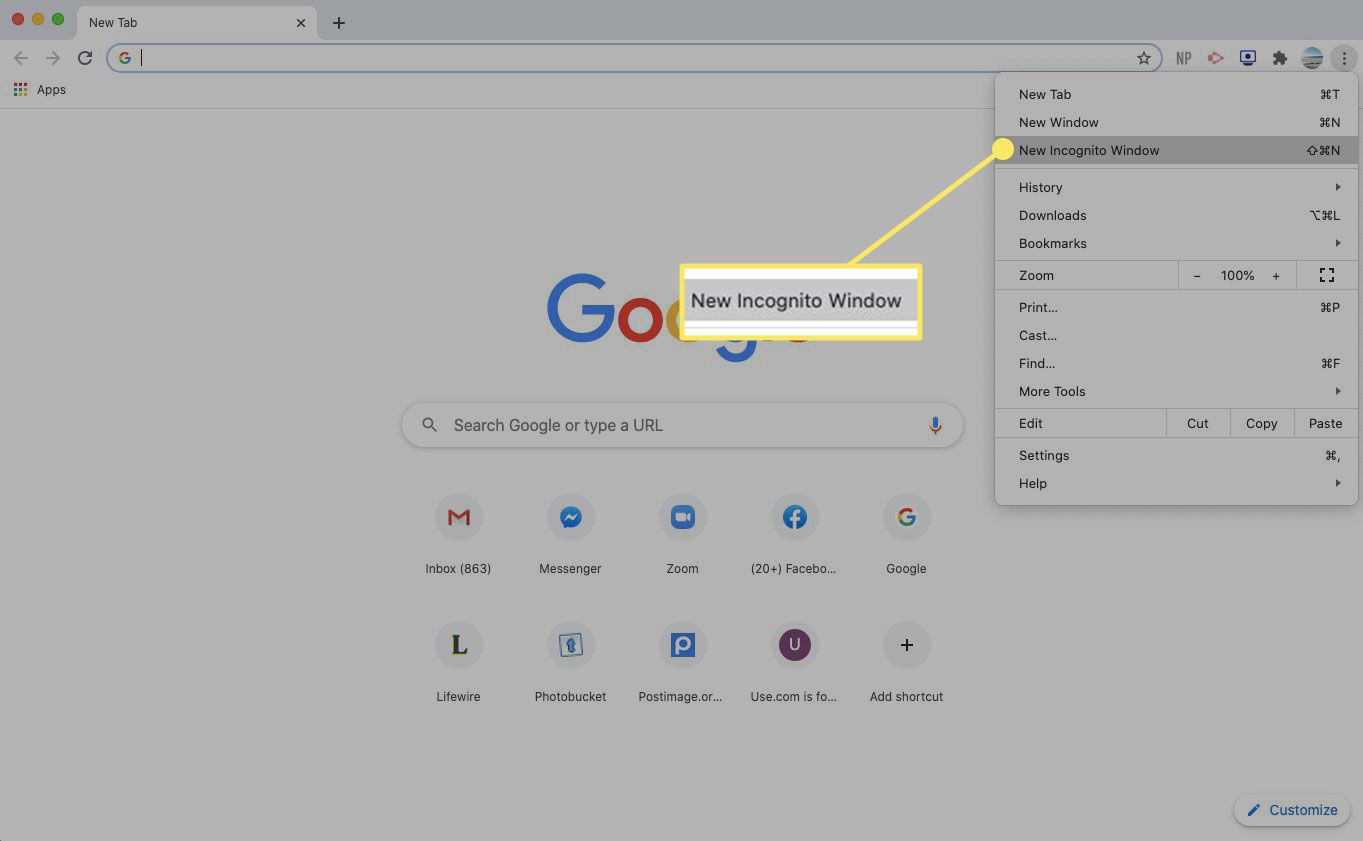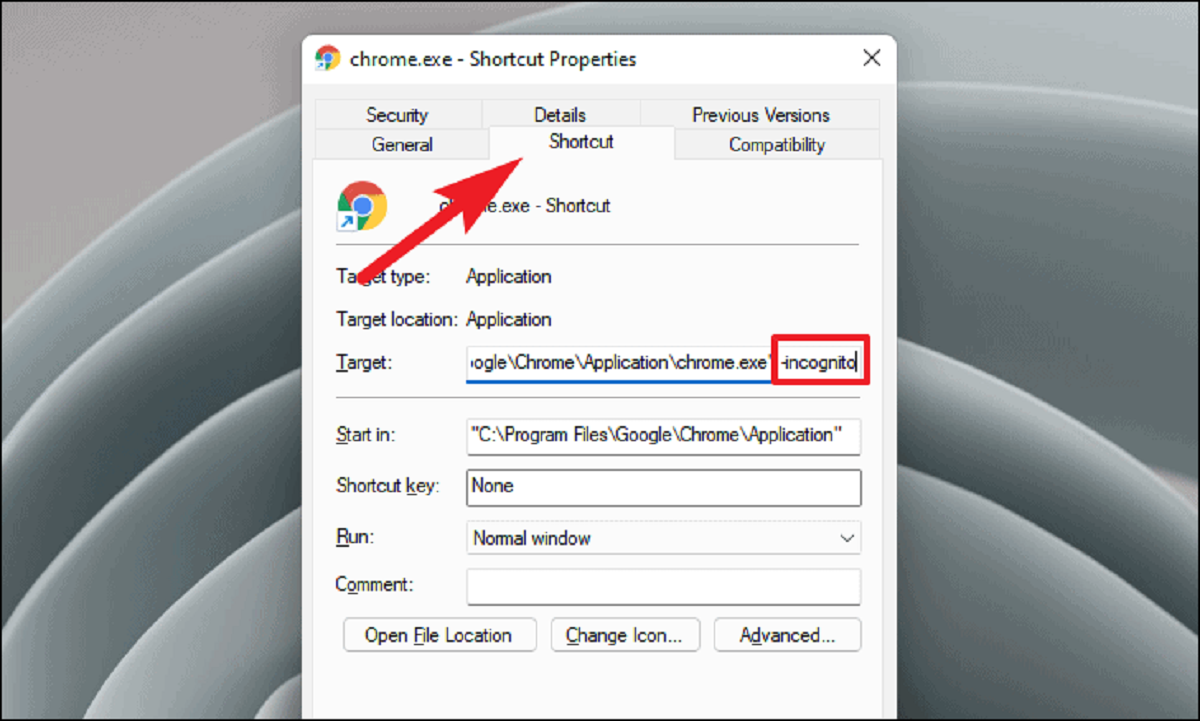Introduction
Welcome to the world of technology, where staying connected is a way of life. From smartphones to laptops, we rely on wifi networks to access the internet and explore a wide array of websites. However, the concept of privacy in the digital age has become a prominent concern. We often wonder if the owner of a wifi network can see what sites we visit, even when we are using the incognito mode.
Incognito mode, also known as private browsing, is a popular feature available in most web browsers. It allows users to browse the internet without leaving behind any traces of their online activities, such as browsing history, cookies, or cached files. While it gives us a sense of anonymity and privacy, it is important to understand its limitations.
In order to answer the question of whether wifi owners can see what sites we visit in incognito mode, we need to delve into how wifi networks function and the purpose of incognito mode. Let’s explore the intricacies of wifi networks and how our online activities may be monitored, regardless of our browsing mode.
Wifi, short for wireless fidelity, allows devices to connect to the internet without the need for physical cables. It uses radio waves to transmit data between devices and a wifi router or access point. When you connect to a wifi network, your device sends and receives data packets to communicate with websites and online services.
The question of whether wifi owners can see what sites we visit depends on the technical aspects of how information is transmitted over a network. Wifi networks operate using two main frequencies: 2.4 GHz and 5 GHz. These frequencies are divided into multiple channels. When you connect to a wifi network, your device uses one of these channels to transmit and receive data.
While wifi owners can see the devices connected to their network and monitor the amount of data being transferred, the content of your internet traffic is usually encrypted. This means that they can see the websites you visit but not the specific pages or information exchanged within those websites. The encrypted data appears as random characters, making it difficult for someone to decipher what you are doing online.
Now that we have a basic understanding of wifi networks and their limitations in monitoring our online activities, let’s explore the purpose of incognito mode and how it affects our privacy.
What is Incognito Mode?
Incognito mode, also known as private browsing or privacy mode, is a feature available in most web browsers that allows users to browse the internet without leaving behind any traces of their online activities. It is designed to provide a sense of privacy and anonymity, particularly when using shared devices or public wifi networks.
When you open an incognito window or tab in your web browser, it operates differently from a regular browsing session. In incognito mode, your browser does not store browsing history, cookies, or cached files. This means that after you close the incognito window, there is no trace of the websites you visited, the searches you performed, or any other online activities you engaged in.
One of the main purposes of incognito mode is to prevent others who may have access to the same device from seeing your browsing history. For example, if you are using a shared computer or a device owned by someone else, you can use incognito mode to ensure that your online activities are not visible to others who might use the same computer or device later.
Additionally, incognito mode can be useful in certain situations where you want to maintain privacy. For instance, if you are researching a sensitive topic or browsing websites that require login credentials, using incognito mode can help protect your personal information from being stored on the device.
It is important to note that while incognito mode provides some level of privacy, it is not foolproof. While your browser may not store your browsing activity, certain elements may still be visible to others, such as your internet service provider (ISP) or the website itself.
Furthermore, incognito mode does not provide protection against other forms of online tracking, such as tracking cookies or fingerprinting techniques. Websites can still gather information about your online behavior through methods that are independent of your browser’s private browsing mode.
Overall, incognito mode is a useful tool when it comes to maintaining a certain level of privacy while browsing the internet. However, it is important to be aware of its limitations and understand that it does not guarantee complete anonymity. In the following sections, we will delve deeper into the topic of whether wifi owners can see what sites you visit while in incognito mode and discuss additional steps you can take to protect your privacy.
How Does Wifi Work?
Wifi, short for wireless fidelity, is a technology that allows devices to connect to the internet without the need for physical cables. It operates by using radio waves to transmit data between devices and a wifi router or access point.
When you connect to a wifi network, your device communicates with the router or access point using a protocol called IEEE 802.11. This protocol ensures that data is transmitted and received in a standardized and secure manner.
Wifi networks operate within specific frequencies, namely the 2.4 GHz and 5 GHz bands. These frequencies are divided into multiple channels, which act as virtual highways for data transmission. When you connect to a wifi network, your device automatically selects an available channel to communicate with the router or access point.
Once connected, your device can send and receive data packets to access websites, download files, stream videos, and perform various online activities. These data packets contain information such as the website address you want to access and the data you want to send or receive.
Wifi networks use various encryption methods to ensure the security and privacy of your data. One commonly used encryption protocol is WPA2 (Wifi Protected Access 2), which encrypts the data that is being transmitted between your device and the router or access point. This encryption helps protect your information from being intercepted and accessed by unauthorized parties.
It’s worth noting that while encryption helps ensure the security of your data while in transit, it does not guarantee complete privacy. Wifi network owners can still see the devices connected to their network and monitor the amount of data being transferred. However, the content of your internet traffic is usually encrypted, making it difficult for them to decipher the specific websites or information you are accessing.
In summary, wifi networks use radio waves to transmit data between devices and a router or access point. They operate within specific frequencies and channels, allowing devices to connect and communicate with each other. While encryption protocols like WPA2 help secure the data being transmitted, wifi network owners can still see the devices connected to their network and monitor the amount of data being transferred.
Can the Wifi Owner See What Sites I Visit?
One of the common concerns when it comes to using wifi networks is whether the owner of the network can see what sites you visit when you are connected. The answer to this question depends on certain factors.
In most cases, the owner of a wifi network can see the websites you visit. This is because the devices connected to the network communicate with the router or access point, which acts as a gateway to the internet. The router can log the websites requested by the connected devices, allowing the owner to view a list of visited sites.
However, it is important to note that while the owner can see the websites, they typically cannot see the specific pages or information you access within those websites. This is because the content of your internet traffic is usually encrypted. Encryption is the process of encoding your data in such a way that it appears as random characters to anyone who intercepts it without the decryption key.
The level of encryption depends on the website you are visiting. Websites that utilize the HTTPS (Hypertext Transfer Protocol Secure) protocol provide an additional layer of encryption, ensuring that the communication between your device and the website’s server is secure. This means that even if the wifi owner can see the domain of the website you are visiting, they cannot decipher the specific pages or information exchanged within that website.
However, it is important to note that not all websites use HTTPS. In some cases, websites still use the standard HTTP protocol, which does not provide the same level of encryption. When visiting such websites, the wifi owner may potentially be able to gather more information about your online activities, including the specific pages you visit and the information you submit.
There are also certain situations where the owner of the wifi network may employ additional monitoring techniques. For example, they might use specialized software or hardware to capture and analyze network traffic, including the content of websites accessed by the connected devices. In these cases, even encrypted websites may not provide complete protection.
It is also worth mentioning that while the wifi owner may have access to the general information about the websites you visit, they may not necessarily be actively monitoring your online activities. Many wifi owners simply do not have the time or inclination to scrutinize the data being transmitted over their network.
Overall, the owner of the wifi network can typically see the websites you visit, but the specific pages and information exchanged within those websites are usually encrypted. It is important to be mindful of the websites you visit, especially when accessing sensitive information, and take additional steps to protect your privacy while using public or shared wifi networks.
What Does Incognito Mode Do?
Incognito mode, also known as private browsing, offers users a way to browse the internet without leaving behind traces of their online activities. It provides a certain level of privacy and anonymity by preventing browsers from storing browsing history, cookies, or cached files. Let’s explore what incognito mode actually does and how it affects your online experience.
When you open an incognito window or tab in your web browser, it operates separately from your regular browsing session. In this mode, the browser does not save your browsing history, download history, or search history. This means that after you close the incognito window, there is no record of the websites you visited or the searches you performed during that session.
Additionally, incognito mode does not save cookies, which are small files that websites use to track your browsing behavior and preferences. Without cookies, websites cannot identify you as a returning visitor or gather information about your online activities. This can be particularly useful when you want to browse certain websites without being influenced by personalized recommendations or targeted advertisements.
Furthermore, incognito mode prevents the browser from saving cached files. Typically, when you visit a website, your browser stores temporary copies of certain elements, such as images and scripts, in its cache. This allows the browser to load the website more quickly when you revisit it. However, in incognito mode, these temporary files are not saved, ensuring that no traces of the websites you visit are left behind on your computer or device.
While incognito mode helps maintain a level of privacy, it is important to understand that it only affects the local storage on your device. It does not make you completely anonymous or invisible to the websites you visit, your internet service provider (ISP), or network administrators. Websites can still gather information from your IP address and other technical data to analyze your behavior and provide relevant content.
Additionally, incognito mode does not provide protection against other forms of tracking, such as fingerprinting techniques or tracking pixels. Websites may still be able to identify you based on unique browser configurations or the information you provide during your browsing session.
Overall, incognito mode is a helpful tool for maintaining privacy and preventing your browser from storing browsing information. It can be beneficial when using shared devices, accessing sensitive information, or simply exploring the internet without leaving behind a digital trail. However, it is important to remember that it is not a foolproof method for anonymity, and additional steps may be necessary to fully protect your privacy while online.
Limitations of Incognito Mode
While incognito mode offers a level of privacy and anonymity, it is important to be aware of its limitations. Although it prevents your browser from storing browsing history, cookies, and cached files, there are certain factors that can bypass the protective features of incognito mode.
Firstly, incognito mode does not hide your online activities from your internet service provider (ISP) or network administrators. While it prevents your browser from storing browsing data, the ISP can still see the websites you visit and the data transferred. They can track your internet activities based on your IP address, including the websites you access, the duration of your visits, and the amount of data exchanged.
Another limitation is that incognito mode does not provide protection against other forms of tracking, such as fingerprinting techniques or tracking pixels. Websites may still gather information about you based on your unique browser configuration or collect data through embedded tracking codes. This data can be used for targeted advertising, website analytics, or other purposes.
Additionally, incognito mode does not hide your online activities from websites themselves. While it prevents your browser from storing cookies and browsing history, websites can still track and collect information about your visit. They can use techniques like IP tracking, browser fingerprinting, and user accounts to identify and track your behavior on their site.
Furthermore, incognito mode does not protect you from malware or phishing attacks. It only prevents your browser from storing certain data. If you encounter a website or download a file that contains malicious content, your device can still be vulnerable to cybersecurity threats. It is important to exercise caution and use reliable antivirus software to protect yourself from such risks.
It is also worth noting that while incognito mode prevents the browser from storing personal information, it does not secure your connection against external eavesdroppers. If you are using public wifi networks or unsecured connections, your online activities can potentially be intercepted by malicious individuals who are monitoring the network traffic. To ensure maximum privacy and security, it is recommended to use virtual private network (VPN) services when connecting to public wifi networks.
Overall, while incognito mode provides a certain level of privacy, it is important to recognize its limitations. It does not hide your online activities from your ISP, network administrators, or websites themselves. It does not protect against tracking techniques, malware, or phishing attacks. To enhance your privacy and security online, it is advisable to combine incognito mode with other tools and practices, such as VPNs, reliable antivirus software, and careful browsing habits.
How Can the Wifi Owner Monitor Your Online Activities?
As a wifi network owner, it is possible to monitor the online activities of the devices connected to your network. Monitoring can provide insights into the amount of data being transferred, the websites visited, and the overall network usage. Here are some common methods that wifi owners can use to monitor your online activities.
Logging and Network Monitoring: The wifi router or access point can log the websites requested by the connected devices. This allows the network owner to view a list of visited sites. Network monitoring software can provide detailed information about the data usage of each device, including the amount of data transferred, bandwidth usage, and even the specific applications being used.
Packet Sniffing: In certain cases, wifi owners may employ packet sniffing techniques to capture and analyze network traffic. Packet sniffing involves intercepting and inspecting the data packets being transmitted over the network. This allows the network owner to examine the contents of the packets, including the websites visited, login credentials, and any other data being exchanged between the device and the internet.
Deep Packet Inspection: Deep packet inspection (DPI) is a more advanced method of monitoring network traffic. It involves inspecting the contents of the data packets in-depth, not just at the header level. This allows the wifi owner to analyze the specific applications being used, URLs visited, and even the content of encrypted traffic. DPI can provide a more detailed understanding of the online activities of the connected devices.
Router Firmware and Parental Control Features: Some advanced routers come with built-in firmware that allows the network owner to enable parental control features. These features can include content filtering, website blocking, and monitoring of online activities. The network owner can access the router settings to view the browsing history and set up restrictions on specific websites or categories of content.
Network Security and Authentication Protocols: Wifi network owners can set up network security measures, such as requiring a password for connection or implementing stronger authentication protocols like WPA2. These measures help ensure that only authorized devices can access the network while providing additional control and monitoring capabilities for the network owner.
It is worth noting that while the wifi owner may have access to general information about the websites you visit, they typically cannot see the specific pages or information you access within those websites if the traffic is encrypted. Encryption protocols, such as HTTPS, secure the data being transmitted, making it difficult for anyone to decipher the contents of the communication.
To maintain your privacy and protect your online activities, especially when using public or shared wifi networks, it is advisable to take additional steps such as using a VPN (Virtual Private Network) to encrypt your internet traffic and enhance your privacy.
Overall, it is important to be aware that wifi owners have certain methods and tools at their disposal to monitor the online activities of the devices connected to their network. While encryption protocols provide some level of security, it is advisable to exercise caution and take necessary precautions to protect your privacy when using wifi networks.
Steps to Protect Your Privacy on Public Wifi
Using public wifi networks can be convenient, but it also comes with certain risks to your online privacy. Here are some steps you can take to protect your privacy when using public wifi:
1. Use a Virtual Private Network (VPN): A VPN encrypts your internet traffic and creates a secure connection between your device and the internet. It helps protect your data from being intercepted and allows you to browse anonymously. Look for reputable VPN providers and use their services to ensure your privacy and security.
2. Avoid Accessing Sensitive Information: Public wifi networks can be vulnerable to hackers attempting to steal sensitive information. Avoid logging into sensitive accounts or accessing confidential information, such as online banking or personal emails. Save these activities for when you are on a trusted, secure network.
3. Verify Network Authenticity: Make sure you are connecting to a legitimate public wifi network. Check with an authorized provider or establishment to ensure that the network name is correct. Cybercriminals sometimes create fake networks with similar names to lure users into connecting and stealing their data.
4. Disable Automatic Network Connections: Turn off the automatic connection feature on your device. This prevents your device from automatically connecting to unknown or unsecured networks without your knowledge. Manually select and connect to trusted networks to ensure your privacy.
5. Enable Firewall and Antivirus Protection: Make sure your device’s firewall and antivirus software are enabled. These tools help protect against potential threats and block unauthorized access to your device. Keep your security software up to date to ensure the latest protections.
6. Encrypt Your Data: Whenever possible, use websites that have encryption enabled. Look for the “https://” in the URL, indicating that the connection is secure. This helps protect your data from being intercepted and accessed by unauthorized individuals.
7. Disable Sharing and AirDrop: Turn off file sharing and AirDrop functionality on your device when connected to public wifi. This prevents others on the network from accessing your files or transferring malicious content to your device.
8. Regularly Clear Browsing Data: Clear your browsing history, cookies, and cached files after using public wifi networks. This ensures that any traces of your online activities are removed from your device.
9. Stay Updated: Keep your device’s operating system and applications up to date. Software updates often include important security patches that protect against the latest threats and vulnerabilities.
10. Use Two-Factor Authentication: Enable two-factor authentication (2FA) for your online accounts whenever possible. This adds an extra layer of security by requiring an additional verification step, such as a temporary code sent to your phone, when accessing your accounts.
By following these steps, you can significantly enhance your privacy and protect your personal information when using public wifi networks. Remember to exercise caution and prioritize your security when connecting to unfamiliar networks.
Conclusion
In the ever-connected world we live in, maintaining privacy and protecting our online activities has become increasingly important. While incognito mode offers a level of privacy by preventing browsers from storing browsing history, cookies, and cached files, it has its limitations. Wifi owners can still see the websites you visit, although not necessarily the specific pages or content within those websites.
Understanding how wifi networks function and the capabilities of incognito mode allows you to make informed decisions about your online privacy. It is crucial to recognize that wifi owners can monitor your online activities by logging network data, employing packet sniffing techniques, or using deep packet inspection. Additionally, they can track your activities based on your IP address and implement network security measures for monitoring purposes.
Taking steps to protect your privacy on public wifi networks is essential. Using a Virtual Private Network (VPN) encrypts your internet traffic, making it more secure and anonymous. Avoiding accessing sensitive information and verifying network authenticity are also key. Enabling firewall and antivirus protection, encrypting data, and disabling sharing features are crucial in safeguarding your privacy.
Regularly clearing browsing data, staying updated with operating system and application updates, and using two-factor authentication contribute to preserving your online privacy.
While incognito mode and these steps enhance your online privacy, it is important to understand that they are not foolproof. It is always advisable to exercise caution, use trusted networks whenever possible, and be mindful of the information you access and share online.
By being aware of the limitations and taking proactive measures, you can strike a balance between enjoying the convenience of wifi networks and protecting your online privacy in today’s digital landscape.







